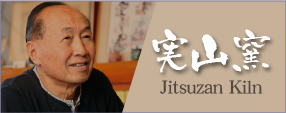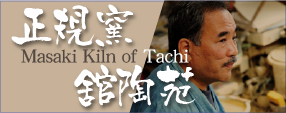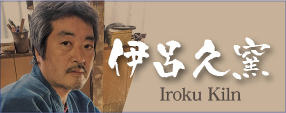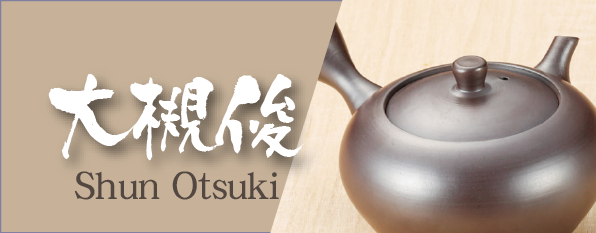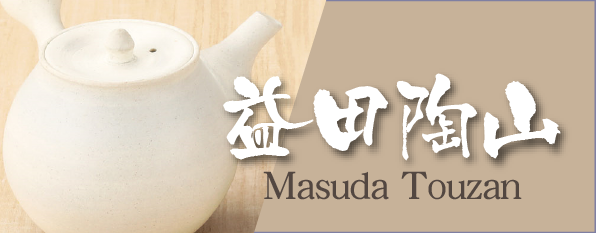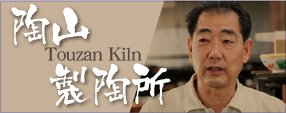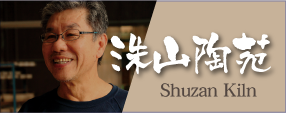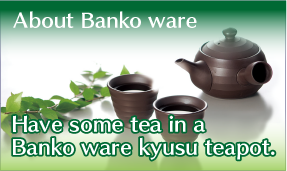About BANKOAbout Banko ware (Banko-yaki)
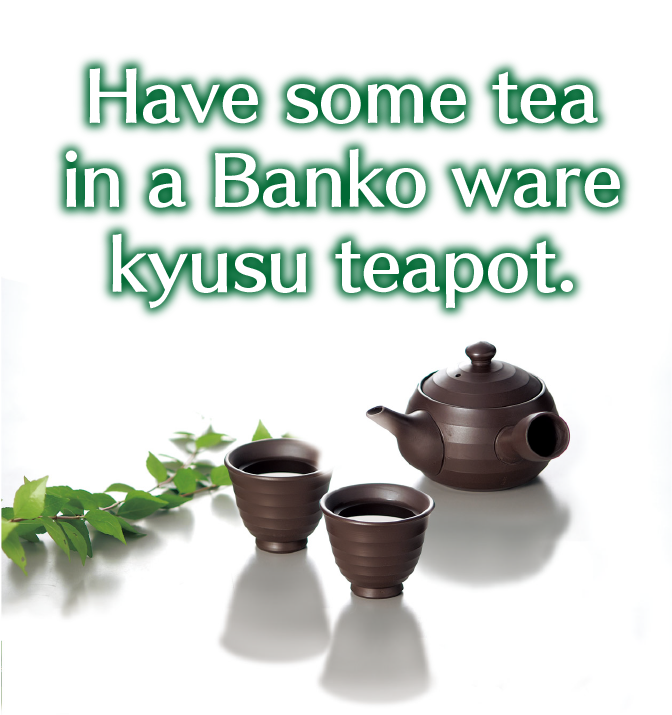
The reason for this is that Banko ware is carefully crafted by experienced potters using carefully selected clay with high iron content, and is baked for a long period of time in a strong reduction furnace. They absorb the astringency of the tea and bring out the true flavor or umami constituents of the tea, including glutamic acid and inosinic acid. They are also excellent in maintaining heat.
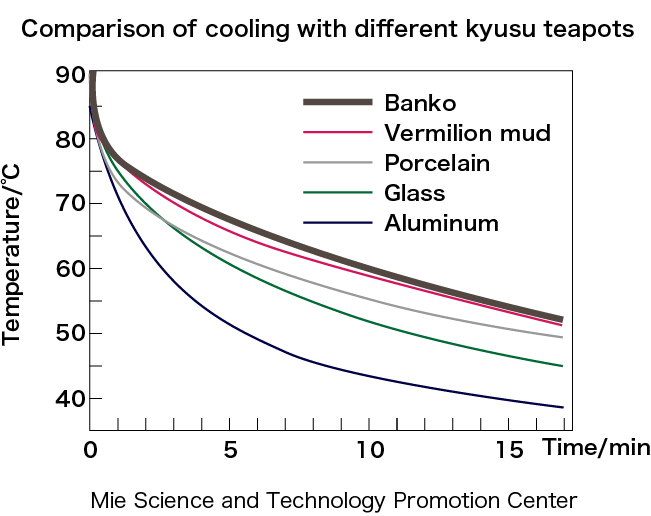
As is shown above, Banko kyusu teapots seem to be the best to maintain the optimal temperature, and hence extracting each components of tea.
The surface of a Banko kyusu teapot has microscopic bumps on it. When light strikes this surface, it scatters and gives off a dull luster and a thin film of iridescence. This is one of the characteristics of Banko ware, but they can also be cleaned with commercial bleach.
In the Genbun era (1736 - 40), Gorozaemon Numanami (Hozan) made pottery with a furnace in Obuke, a suburb of Yokkaichi, which was the beginning of Banko ware. His works were excellent in reddish paintings with a lot of tea pottery, and he incorporated exotic tastes such as calico into the patterns and called them "Rozan Banko". Later, he built a kiln at a villa in Edo Koume in the Horeki era (1751 - 63), and was patronized by the Shogun family as Sukiya utensil called "Edo Banko." After the death of Rozan, in Tempo 2 (1832), Yusetsu Mori restored a kiln in Obuke, a place associated with Rozan. Under the name of "Yusetsu Banko" they made many utensils for green tea and drinking vessels, and used creative techniques to start the first era of Banko ware. On the other hand, in Bunsei 12 (1829), Shosuke Ueshima, a potter from Shigaraki, opened a kiln at Yuifuku-ji Temple in Higashi-akuragawa village in Mie-gun (currently Higashi-akuragawa, Yokkaichi-city), and hired some professional potter wheel turners to bake daily tableware. Around the time of Koka (1844 - 48), Chuzaemon Yamanaka in Suenaga, who was immersed in his research, gathered craftsmen and had them make kyusu teapots. Despite the changing times, it is said that the origin of Banko ware is in the letters "Banko" or "Banko Fueki (Banko forever)," which were inscribed with Rozan's pieces as work which should be handed down forever. About two and a half centuries after the death of Rozan, Yokkaichi Banko ware was designated as a Traditional Craft Industry in 1979.


![中国語[簡体]](https://iseshinpanhonpo.gride.jp/3.0/image/interface/multilingual-button__chn_white.png)
![中国語[繁體]](https://iseshinpanhonpo.gride.jp/3.0/image/interface/multilingual-button__twn_white.png)



